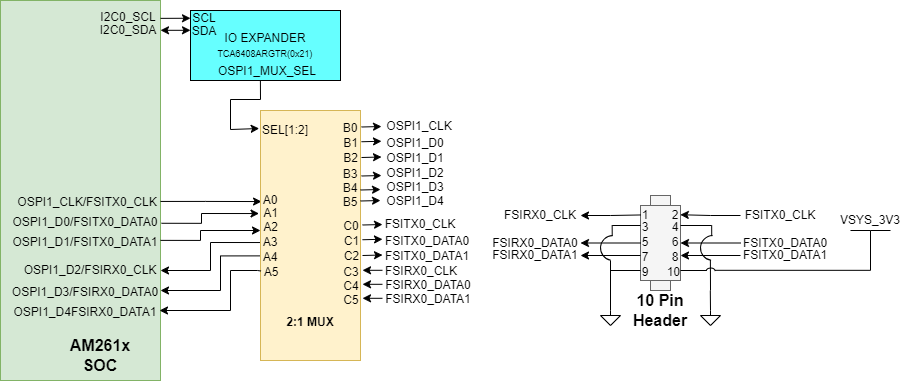SPRUJF1 November 2024 AM2612
ADVANCE INFORMATION
- 1
- Description
- Key Features
- 1LaunchPad Module Overview
-
2Hardware Description
- 3.1 Board Setup
- 3.2 Functional Block Diagram
- 3.3 GPIO Mapping
- 3.4 Reset
- 3.5 Clock
- 3.6 Memory Interfaces
- 3.7 Ethernet Interface
- 3.8 I2C
- 3.9 Industrial Application LEDs
- 3.10 SPI
- 3.11 UART
- 3.12 MCAN
- 3.13 FSI
- 3.14 JTAG
- 3.15 TIVA and Test Automation Pin Mapping
- 3.16 LIN
- 3.17 ADC and DAC
- 3.18 EQEP and SDFM
- 3.19 EPWM
- 3.20 USB
- 3.21 BoosterPack Headers
- 3Known Issues and modifications done on LP-AM261 RevE1
- 4Additional Information
- 5References
- 6Revision History
2.13 FSI
The AM261x LaunchPad supports a fast serial interface by terminating the SoC signals to a 10-pin header. The interface has two lines of data and a clock line for both the receive and transmit signals. The 10-pin header is connected to the 3.3V System voltage supply. AM261x internal pinmux can be used to select between FSI signals and other functionality of the associated pins. After that there is 2:1 mux that select between FSI signals and OSPI signals, from FSI signals are routed to the 10-pin header.
 Figure 2-21 FSI 10-Pin
Header
Figure 2-21 FSI 10-Pin
Header